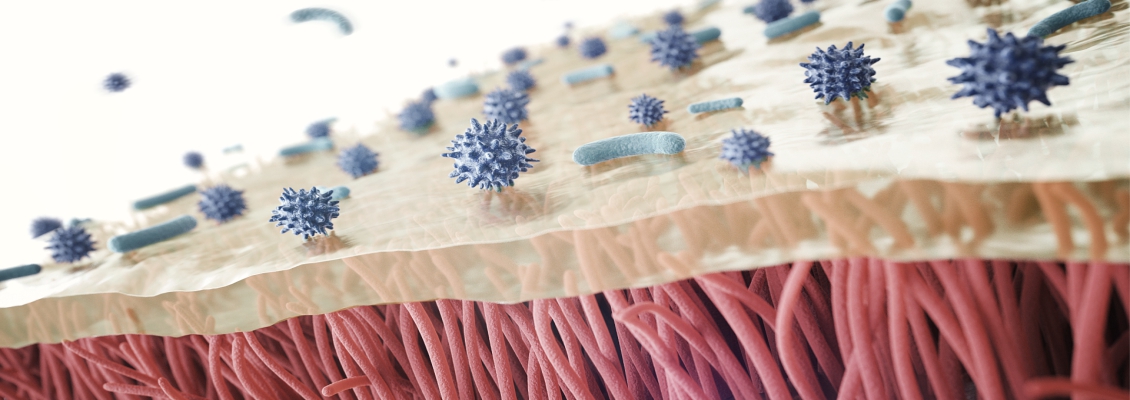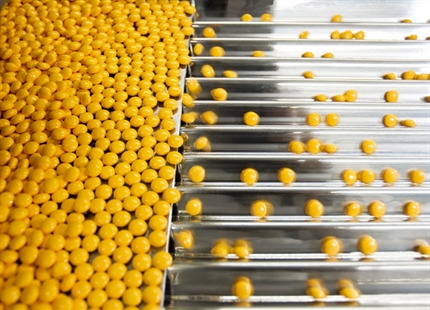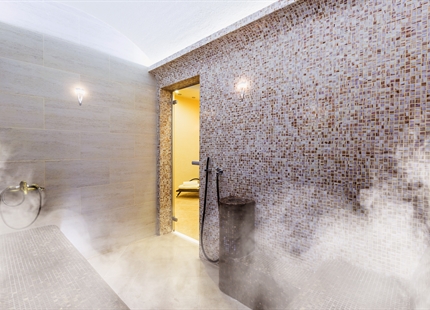Why Humidify... For The Immune System
The immune system is the biological defense system that protects the body against pathogenic microorganisms such as viruses, bacteria and fungi, fine dust and other aggressive substances.





The immune system is the biological defense system that protects the body against pathogenic microorganisms such as viruses, bacteria and fungi, fine dust and other aggressive substances. Its first line of defense is the mechanical barriers of the skin and the mucus membranes of the airways. The airways with their mucus membranes protect the body by removing pathogens as quickly as possible with the help of the sticky mucus to which they adhere and which conveys them against the larynx like a rolling carpet. Mucus and cilia are part of a sophisticated self-cleaning mechanism. The cilia move back and forth, like grass in the wind. This movement transports the mucous and all unwanted invaders towards the larynx, where they can be coughed out or swallowed after clearing the throat. In the stomach, they are destroyed by gastric acids.
If the air is too dry, the secretion becomes sticky and impedes the movement of the cilia. With a good level of humidity in the air and properly functioning mucous membranes, the pathogens can be eliminated from the respiratory tract via the mucous membranes and rendered harmless within between 5 and 30 minutes. However, the longer they stay in the body, the greater the contagion risk becomes. "At workstations with air humidification, the complaints regarding dry air reduce by one third to 35 percent" a current study at the Fraunhofer Institute for Industrial Engineering has determined (Jurecic, Rief).
Larger airborne particles
The water vapor in the air links all surfaces of the room, including the airborne particles, through condensation. The airborne particles become “sticky” through the adsorption of water. The particles therefore increasingly stick to the surfaces, become heavier, are deposited more quickly and can no longer be breathed in. The air becomes cleaner. Ultimately, larger particles can no longer penetrate so far into the respiratory tract and are transported away more quickly. A video at tinyurl.com/ha82vnq shows this interconnection clearly. In general, a relative air humidity of between 40 and 60% is recommended. A study proves that among asthma sufferers, air humidification contributes to alleviation of the symptoms (Strauss).
Modern building use
Since heat energy has to be conserved, houses are being built with more and more insulation and are being mechanically ventilated. In addition, the comfort temperature has risen continuously over the last number of years. Through a 4–6°C higher air temperature, the relative air humidity drops by 10–15%. In living situations also, due to single households with ready-made meals, microwave and washer-dryers instead of clothesline drying, less humidity is produced. As a result, the air dries out significantly during the winter. Modern ventilation systems therefore use diffusion humidifiers for an efficient rehumidification.
Sources:
Sale: “Einfluss der relativen Luftfeuchte in Klassen- und Wohnräumen auf die Erkältungshäufigkeit von Kindern” [The influence of relative air humidity in classrooms and living areas on the frequency of colds among children], 1972
Green: “Einfluss der relativen Luftfeuchte auf die Erkrankungshäufigkeit von Schülern” [The influence of relative air humidity on the frequency of illness of school pupils], 1985
Strauss et al: “Einfluss der relativen Luftfeuchte auf den Erkrankungsgrad bei Asthmatikern” [The influence of relative air humidity on the degree of illness among asthmatics], 1978
Jurecic, Rief — Fraunhofer Institut Arbeitswirtschaft und Organisation IAO [Fraunhofer Institute for Industrial Engineering]: “Luftfeuchtigkeit am Büroarbeitsplatz” [Air humidity in the office workplace], 2014










 Learn more about humidification for the immune system...
Learn more about humidification for the immune system...










Contact us now to learn more about humidity for human health...















